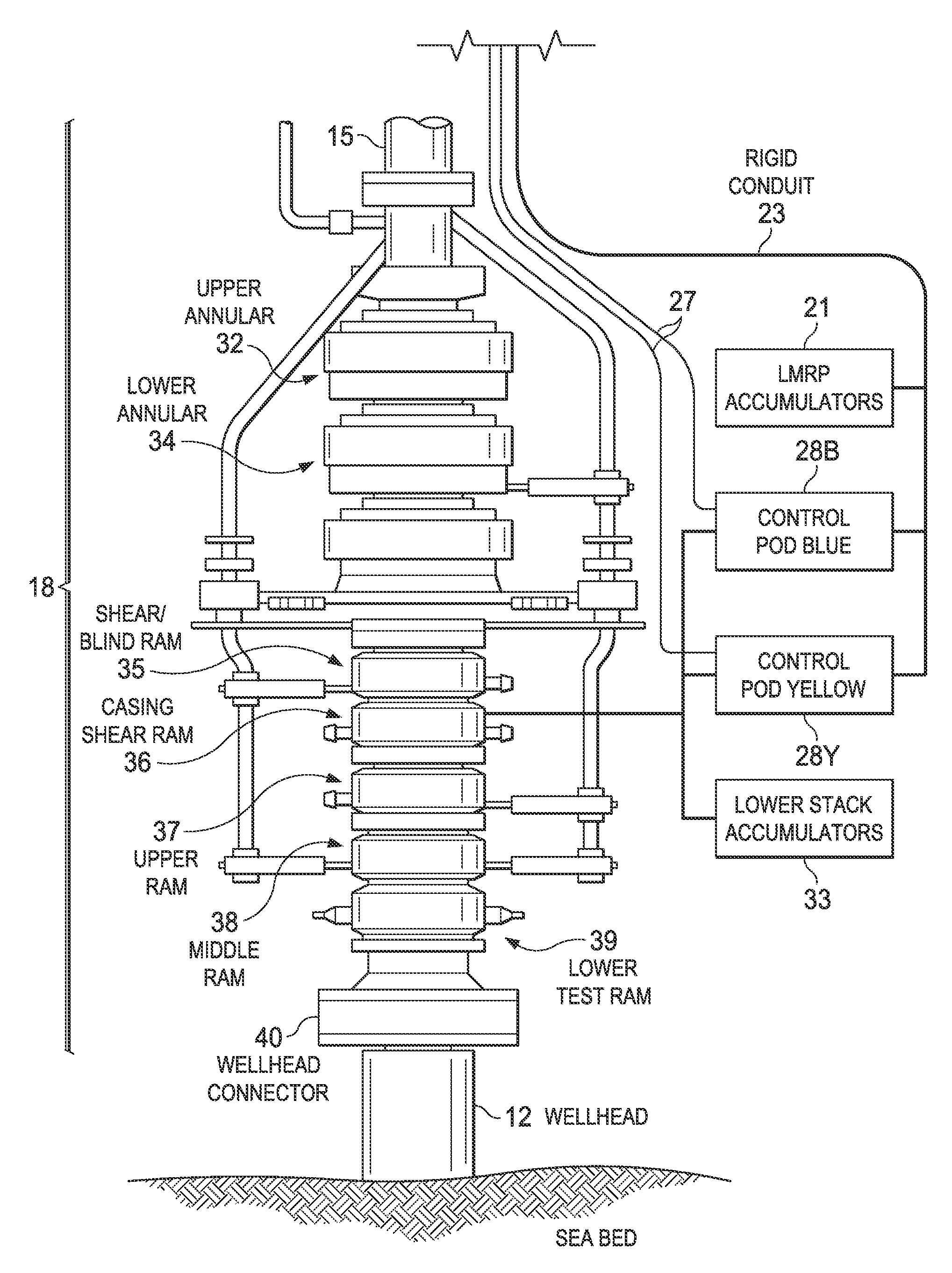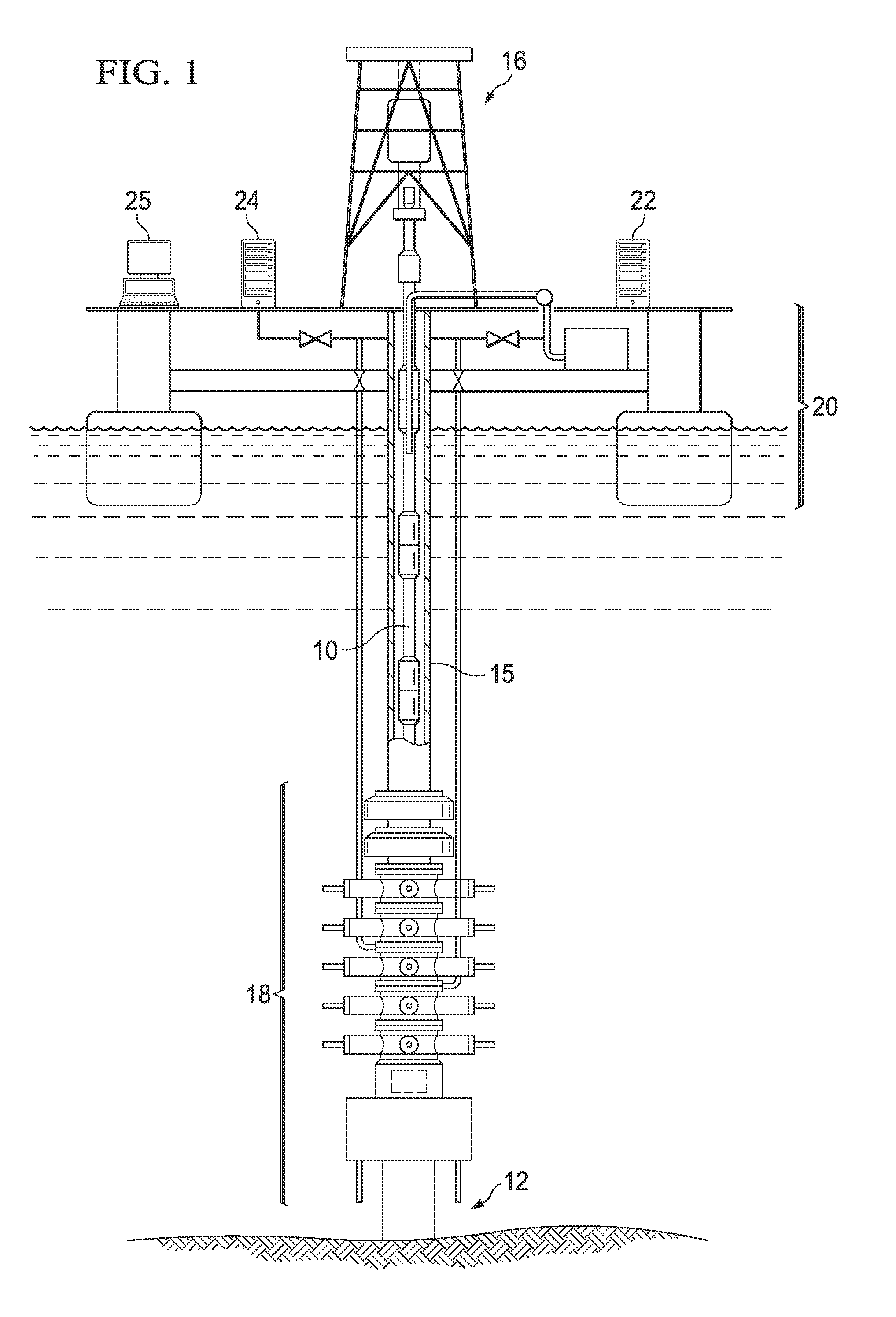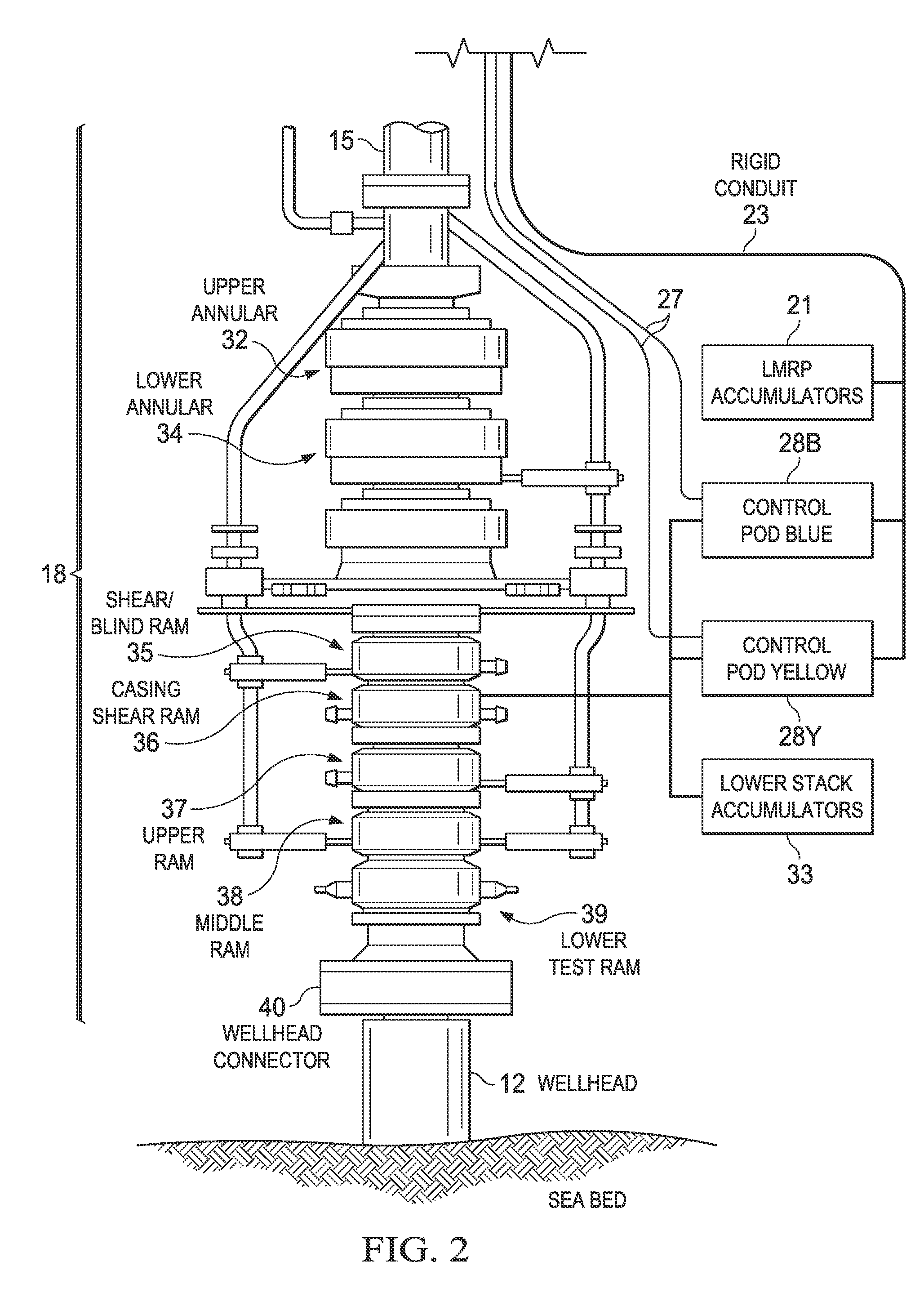Monitoring the health of a blowout preventer
a technology of monitoring the health of a blowout preventer and a control device, which is applied in the direction of sealing/packing, instruments, and wellbore/well accessories, etc., can solve the problems of failure of the well, increased sudden pressure in the wellbore itself, and complex control systems of the conventional blowout preventer
- Summary
- Abstract
- Description
- Claims
- Application Information
AI Technical Summary
Benefits of technology
Problems solved by technology
Method used
Image
Examples
Embodiment Construction
[0018]For simplicity and illustrative purposes, the principles of the present teachings are described by referring mainly to exemplary embodiments thereof, namely as implemented into a computerized monitoring system for determining the health and status of a blowout preventer in an offshore drilling context. However, it is of course contemplated that this disclosure can be readily applied to and provide benefit in to other drilling and production applications beyond that described in this disclosure, including blowout preventers deployed at the surface. One of ordinary skill in the art would readily recognize that the same principles are equally applicable to, and can be implemented in, all types of information and systems, and that any such variations do not depart from the true spirit and scope of the present teachings. Moreover, in the following detailed description, references are made to the accompanying figures, which illustrate specific exemplary embodiments. Electrical, mech...
PUM
 Login to View More
Login to View More Abstract
Description
Claims
Application Information
 Login to View More
Login to View More - R&D
- Intellectual Property
- Life Sciences
- Materials
- Tech Scout
- Unparalleled Data Quality
- Higher Quality Content
- 60% Fewer Hallucinations
Browse by: Latest US Patents, China's latest patents, Technical Efficacy Thesaurus, Application Domain, Technology Topic, Popular Technical Reports.
© 2025 PatSnap. All rights reserved.Legal|Privacy policy|Modern Slavery Act Transparency Statement|Sitemap|About US| Contact US: help@patsnap.com



